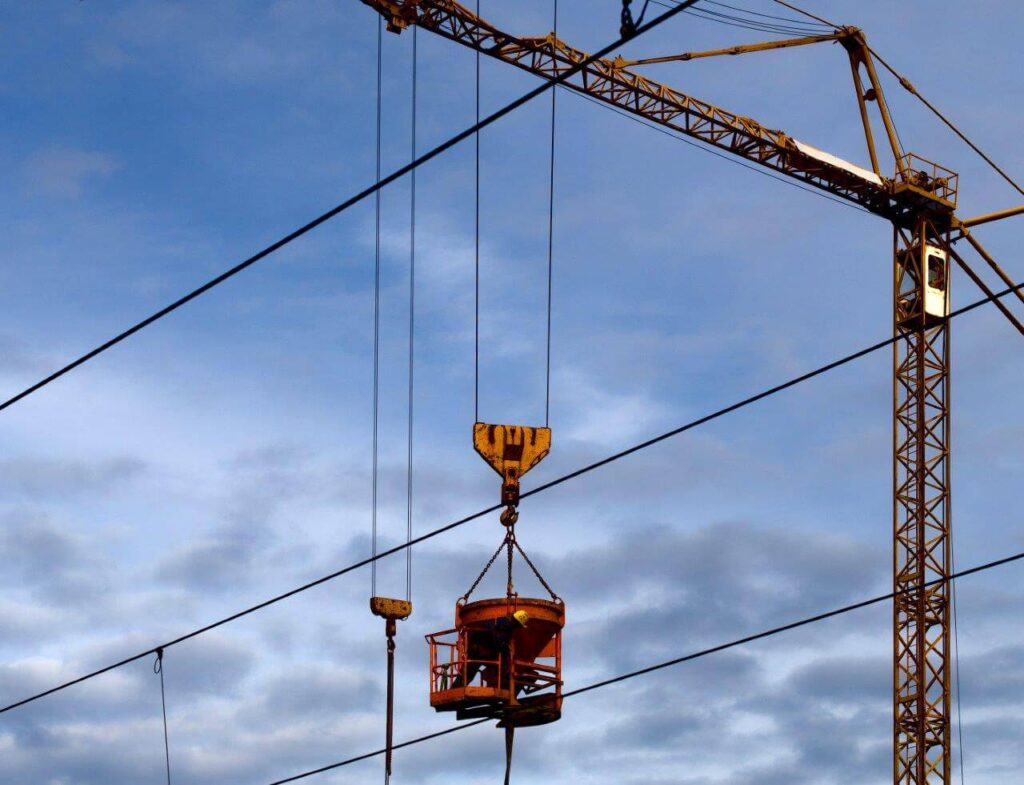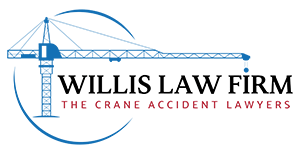
Crane Electrocutions: Working Safely Near Power Lines
Hundreds of construction workers die each year on the job. Falls are the most common cause of death but electrocution is the third leading cause of construction fatalities. Approximately one in ten construction worker deaths are the result of an electrocution. Employers must provide their workers safe workplaces and protect vulnerable workers against hazards such as live power lines that can cause electrocution.
OSHA Information: Word Safely with Cranes Near Power Lines
Crane Hit Power Lines Accident
Crane electrocution accidents involving a service truck with crane, boom truck, bucket-sign crane, crawler crane, or other types of truck mounted cranes happen far too often. The Occupational Safety and Health Administration (OSHA) statistics show that nearly half of all overhead crane accidents occur when cranes and machinery comes into contact with power sources. When a crane contacts the power line or power source, the person operating the crane often is electrocuted but they are not always the only one that is in danger of electrocution. Other crane workers like crane spotters and crane riggers that are helping guide the crane or its load may also come into contact and be injured. In fact OSHA says nearly 600 workers sustain serious injuries due to power line accidents each year.
How to Prevent Crane Electrocution Accidents
Ensure that workers assigned to guide cranes and crane operators or other boom operators are specifically trained in safe operating procedures near powerlines. Workers must understand the limitations of devices such as boom guards, insulated lines, grounding, etc and recognize that not all of these methods are fail safe. Workers must continue to treat the power lines as an extreme hazard even if many of the below OSHA safety measures are followed.
OSHA Information: Preventing Electrocutions of Crane Operators and Crew Members
OSHA and the National Institute for Occupational Safety and Health (NIOSH) state that employers shall ensure that overhead power lines are de-energized or separated from the crane and its load by implementing one or more of the following safety measures: De-energize and visibly ground electrical distribution and transmission lines at the point of work, use insulated barriers that are not part of the crane to prevent contact with power lines, if power lines are not de-energized, operate the crane at least 20 feet away from power lines or at least 10 feet for lines rated 50 kilovolts or below.
Other methods to prevent cranes making contact with power lines include using warning lines with flags to visibly show where the power line’s buffer zone is located. Another method is to use a designated observer that is assigned to monitor the distance between high-reaching equipment and the power lines. Protective technologies designed for cranes have also proven useful in preventing electrocutions. These can include: power line proximity indicators, boom-cage guards, and insulating links. Boom-cage guards are designed to provide an insulating standoff that shields the boom from the power line. In addition, the cage the operator sits in normally will shield the operator from electrocution similar to the way a car can protect the driver if lightning hits it.
ELCOSH Information: Managing Power Line Hazards
Crane Electrocution Death Examples
The Occupational Safety and Health Administration (OSHA) website provides numerous examples of crane electrocutions and crane electrocution safety precautions that can save lives.
Example 1 involves construction workers who were replacing pipe in a trench on a roadside where power lines were located overhead and nearby. The workers had to unload the pipe using a truck mounted crane to move the pipe from the trailer to the trench. The crane operator was guided by the other worker on the ground who had his hand on the pipe guiding it along. Then the crane operator accidentally moved the crane boom and contacted the power line overhead that had not be de-energized. The worker holding and guiding the pipe was electrocuted and killed instantly.
Example 2 involves a well driller who was electrocuted when a metal pipe was lifted by a truck-mounted crane contacted a 12,000 volt powerline overhead. The workers were repairing a pump for a water well at a residence. The powerlines passed directly over the well. The truck-mounted crane had been positioned beneath the powerline and was being operated via a handheld remote. The boom of the crane was extended 36 feet and made contact with the 32ft power line. The crane cable was attached to a galvanized pipe that ran into the pump. When the victim raised the pipe, it contacted the power line and energized the crane and electrocuted the victim holding the handheld remote.
Example 3 occurred when a construction worker was electrocuted after pulling wire rope attached to a crane cable toward the load. The choker was to be connected to a steel roof joist 150ft off the ground. The cab of the crane was positioned only 12 feet from a 7200 volt power line. When the crane operator swung the crane boom and cable back toward the victim, the victim grabbed the choker in his hand and then held a steel rod in his right hand that contacted the ground. As the crane boom swung it made contact with the power line and electricity passed through the victim and the steel rod into the ground.
Crane Electrocution Accident Attorney
If you or a loved one has been seriously injured or killed operating a crane or working on a construction site or any industrial setting, then call and talk with a Board Certified Personal Injury Lawyer at the Willis Law Firm. No Fees or Expenses Charged unless we get you a recovery. Call or fill out the form on this page for a free and private consultation to see if a crane accident lawsuit is right for you and your family. Contact us today.
